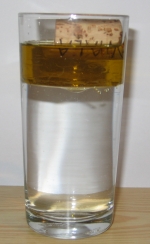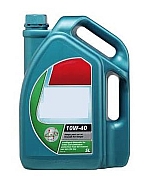Supplement 2.2: Properties of Oil (1/2)
In regard to oil spill accidents in the sea, the following properties of oil are relevant.
- Density
- Viscosity
- Pour point
- Distillation characteristics
- Flash Point and explosive range
The density of an oil is responsible for its behaviour in water, i.e. its floatage and its ability to mix up
with the water. At 15°C the density of water is 1 g/cm3. For sea water it is 1.02 to 1.07 g/cm3.
For crude oils the density is between 0.75 and 1.00 g/cm3. Thus crude oils normally float on water. However, once spilt,
the density increases progressively until values similar to those for sea water are reached. This leads back to weathering phenomena,
such as evaporation and emulsification. As the density of oil increases, its buoyancy decreases, making it more difficult to be
detected and absorbed. The density of an oil in relation to water is referred to as its relative density.
The density of an oil is an indicator of yield from distillation and is therefore of interest for refiners.
Oil density is expressed in degrees of API gravity, a standard of the American Petroleum Institute. API gravity is computed as stated in the formula below, where SG is the specific gravity of the oil at 60°F (approx. 15.6°C).
The viscosity of a substance describes its resistance to flow.It varies greatly with temperature. The viscosity of different oils varies widely. It increases as their specific weight and density increases. Characteristics of flow matter to producers because the oil's viscosity at reservoir temperature determines how easily oil flows to the well for extraction.
When spilt to the sea, the viscosity of oil progressively increases, due to weathering phenomena, such as evaporation and emulsification. A change in viscosity alters the pollutants behaviour on the sea surface. All oils become more viscous (i.e. flow less readily) as their temperature falls, some more than others depending on their composition.
The pour point is the temperature below which an oil will not pour or flow. It is a function of the wax and asphaltene content of the oil. As an oil cools, flow is increasingly hindered until the oil eventually changes from liquid to semi-solid at the pour point. For some oils the pour point is way below zero, but for some it is at about 15°C. The typical temperature at which oil is transported in tankers (cargo temperature) is above 30°C. In case of a tanker accident the oil thus cools down and begins to thicken until its pour point is reached.
As the temperature of an oil is raised, different components reach their boiling point one after another and evaporate: they are distilled. Some of these components are toxic. That means they have the potential to produce illness or damage to living organisms. Some oils contain residues which do not readily distil, even at high temperatures. These are likely to persist for extended periods in the environment. At a concentration of 900ppm (0.09%) Volatile Organic Compounds (VOCs) lead to irritation of respiratory channels and eyes after about an hour (CEDRE 2006).
Knowledge of the pour point and thus the consistency of the oil is very important in terms of taking the right response measures in the case of an oil spill. For example liquid oils may be skimmed from the surface, whereas in the case of solidified oils mechanical methods for removal are needed.


